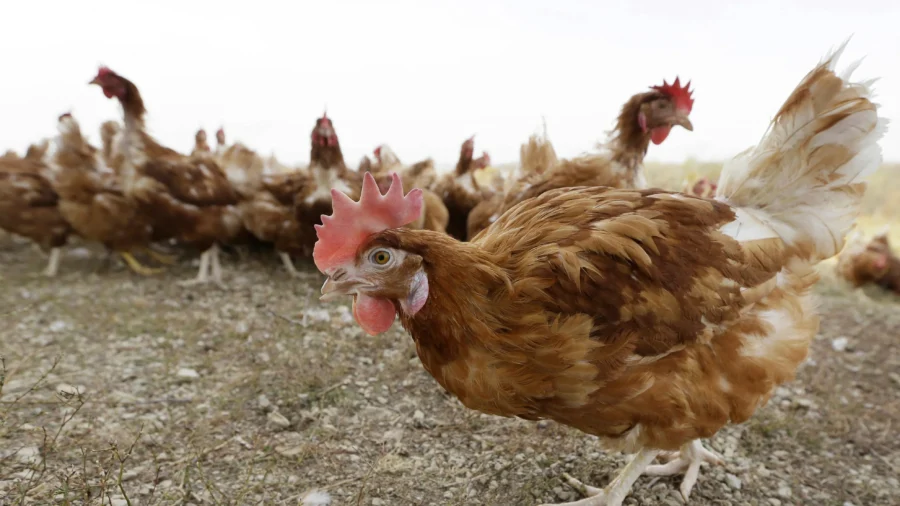The World Health Organization (WHO) said on Tuesday that a case of human infection with avian influenza A (H9N2) virus, also known as the bird flu, was detected in a child in the West Bengal state of India.
The patient was a 4-year-old child who recovered and was discharged from the hospital, according to a World Health Organization (WHO) announcement.
This is the second human patient with bird flu reported to the WHO from India, the first being in 2019.
Infection happens when people come in contact with contaminated poultry or environments.
According to the WHO, human infection tends to result in mild symptoms. Globally, however, there have been 888 infected patients, resulting in 463 deaths reported across 23 countries since 2003. The majority of cases have occurred in Egypt, Indonesia, and Vietnam. WHO said the current public health risk posed by this virus to the general population is low.
“However, the risk assessment will be reviewed should further epidemiological or virological information become available,” the announcement says.
The child was exposed to poultry at home and in the surroundings. No known persons reported symptoms of respiratory illness in the family, the neighborhood, or among healthcare workers at the health facilities where the child was treated.
WHO said they were notified of this human case of bird flu in India on May 22, 2024. The 4-year-old patient presented symptoms on Jan. 26. The child was admitted to the intensive care unit of a hospital with severe respiratory distress, recurring high fever, and abdominal cramps. He was diagnosed with pneumonia. Later, he tested positive for influenza B and adenovirus and was discharged almost a month later, on Feb. 28.
Severe respiratory disease recurred some days later, and the child was admitted to the pediatric ICU and intubated at another hospital. A nasopharyngeal swab from the child was then identified as avian influenza, or influenza A (H9N2). On May 1, the child was discharged from the hospital with oxygen support. Information on the vaccination status and details of antiviral treatment were not available at the time of reporting.
In response to the incident, the Indian government started an investigation into avian influenza in poultry in the local area. Given the continued detection of the virus in poultry populations, sporadic human cases can be expected.
Current data suggest that this virus has not acquired the ability to be sustained in transmission among humans. Thus, the possibility of human-to-human transmission is low, according to the announcement.
“The public should avoid unprotected contact with live poultry, high-risk environments such as live animal markets or farms, and surfaces that might be contaminated by poultry droppings,” WHO said.
Bird Flu History
Animal influenza viruses normally circulate in animals but can also infect humans. Laboratory tests are required to diagnose human infection with influenza. Influenza A viruses can be classified as avian influenza, swine influenza, or other types of animal influenza viruses.
Avian influenza virus infections in humans may cause diseases ranging from mild upper respiratory tract infections to more severe infections, which can be fatal. Conjunctivitis, gastrointestinal symptoms, encephalitis, and encephalopathy have also been reported.
Avian influenza viruses, or the bird flu, have been circulating among birds for a long time. In early December 2023, however, an outbreak occurred in U.S. dairy cows, even though cattle are not typically susceptible to avian influenza.
In late March, a U.S. dairy farm worker was infected by a H5N1 virus from a cow.
On May 22, a second human case of H5N1 infection was reported in Michigan, this time with prior exposure to infected dairy cows.
On the same day in May, an Australian child was infected by an H7 strain, another subtype of influenza A known to cause human infections.
Since bird flu infections in humans are rare, these incidents have raised significant concern among scientists.
The first instance of bird flu was discovered in 1996 in a sick goose in China’s Guangdong province. The strain then was the H5N1, which has since mutated.
In 2013, the H5N1 clade 2.3.4.4b emerged. Since then, it has spread rapidly to nearly 100 countries across Asia, Europe, Africa, and America, becoming the most dominant clade and causing significant losses to the poultry industry.
The current bird flu outbreak in the United States, which started in February 2022, has forced the slaughter of nearly 100 million chickens and turkeys.
Yuhong Dong contributed to this report.

